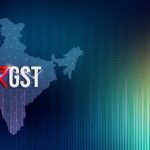The Income Tax Return Form 1 (ITR-1), also known as Sahaj, is a simplified form for individual taxpayers. It is designed for residents who have income primarily from salary, one house property, other sources (like interest), and agricultural income up to ₹5,000. However, several categories of taxpayers are ineligible to use this form for the Financial Year 2023-24 (Assessment Year 2024-25). The following outlines who cannot file ITR-1:
Director in a Company:
Individuals who serve as directors in any company are barred from using ITR-1. This restriction is in place because directors may have more complex financial affairs and income streams that require detailed reporting beyond the scope of ITR-1.
Holders of Unlisted Equity Shares:
Taxpayers who have held unlisted equity shares at any time during the previous year are not eligible to file ITR-1. Unlisted equity shares typically involve more intricate tax implications that need comprehensive disclosure.
Assets Located Outside India:
Individuals owning any asset outside India, including financial interests in any entity, are excluded from filing ITR-1. This provision ensures thorough reporting and compliance with global taxation norms.
Signing Authority in Foreign Accounts:
If a taxpayer has signing authority in any account located outside India, they cannot use ITR-1. This rule is part of India’s regulatory measures to prevent tax evasion and ensure full disclosure of foreign financial interests.
Income from Foreign Sources:
Taxpayers with any source of income outside India are ineligible to file ITR-1. Income from foreign sources requires detailed reporting to comply with international tax treaties and domestic tax laws.
Deduction Under Section 194N:
Individuals subject to tax deduction at source (TDS) under Section 194N, which pertains to cash withdrawals exceeding specified limits, cannot file ITR-1. This rule is aimed at discouraging large cash transactions and promoting digital transactions.
Deferred Tax on ESOPs:
Taxpayers who have deferred tax payment on Employee Stock Option Plans (ESOPs) as per the specified provisions are not allowed to file ITR-1. Deferred ESOP taxes involve future tax liabilities that require detailed tracking and reporting.
Brought Forward or Carry Forward Losses:
Individuals who have any brought forward loss or loss to be carried forward under any head of income cannot use ITR-1. Loss carryovers necessitate detailed income and loss tracking across multiple financial years, which ITR-1 does not accommodate.
Income Exceeding ₹50 Lakhs:
Taxpayers with a total income exceeding ₹50 lakhs are not eligible to file ITR-1. Higher income levels often involve more complex tax scenarios, requiring detailed disclosures and computations available in other ITR forms.
Conclusion
While ITR-1 is a convenient and simplified form for many individual taxpayers, it is crucial to recognize the categories of taxpayers who are ineligible to use it. These restrictions ensure that individuals with more complex financial situations or higher income levels provide detailed and accurate disclosures to the tax authorities. Taxpayers falling under any of the above categories should consider using the appropriate ITR form that aligns with their financial circumstances and reporting requirements.






